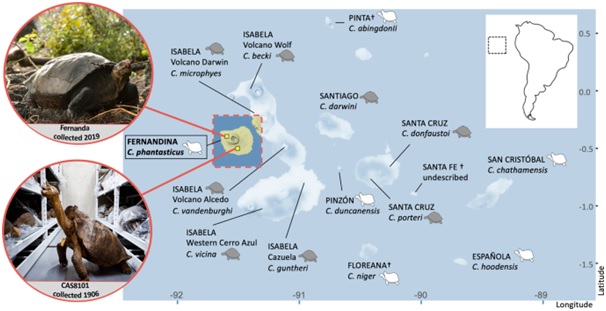

Context
Species of turtle named Fernanda after her Fernandina Island thought extinct 100 years ago rediscovered recently.
About
What is ChelonoidisPhantasticus?
- It belongs to Chelonoidisphantasticus.
- Chelonoidisphantasticus means “fantastic giant tortoise”.
- It is commonly called Fernandina Island, Galápagos Giant Tortoise.
- It has been named Fernanda after the Fernandina Island where it was discovered.
- The species was so far known only from a single individual, collected in 1906.
- It has now been recently discovered again in 2019.
- These tortoises can’t swim from one island to another. But they can be carried from one Galápagos island to another during major storms. There are also historical records of seafarers moving the tortoises between islands.
Habitat and Distribution
- Chelonoidisphantasticus is a saddle backed tortoise adapted for browsing on higher vegetation such as Opuntia trees.
- Fernandina habitat is largely dry xeric brushland at lower elevations, but much of that habitat has been destroyed by extensive recent lava flows.
- The small area of remaining higher-quality habitat is mesic and at higher elevations.

IUCN Status
- Chelonoidisphantasticus is listed as Critically Endangered.
What is Fernandina Island?
- Fernandina Island is an active volcano that stands alone on the western periphery of the Galápagos Archipelago.
- It is reputed to be the largest pristine island on Earth.
- Fernandina Island is the third largest, and youngest, island of the Galápagos Islands, as well as the furthest west.
|
About Galapagos Islands
|

